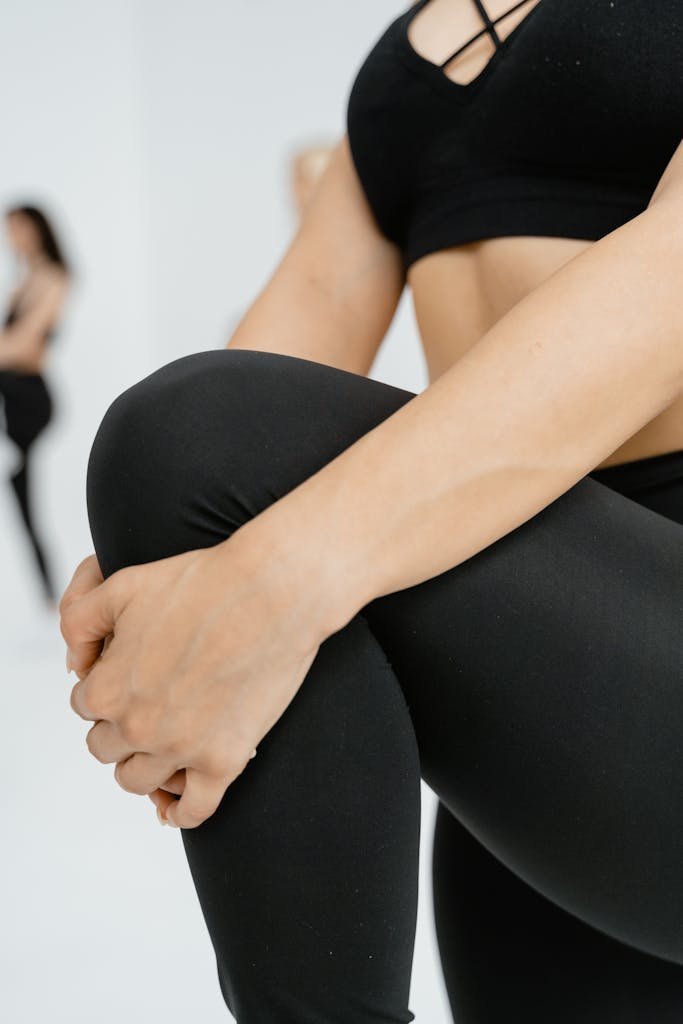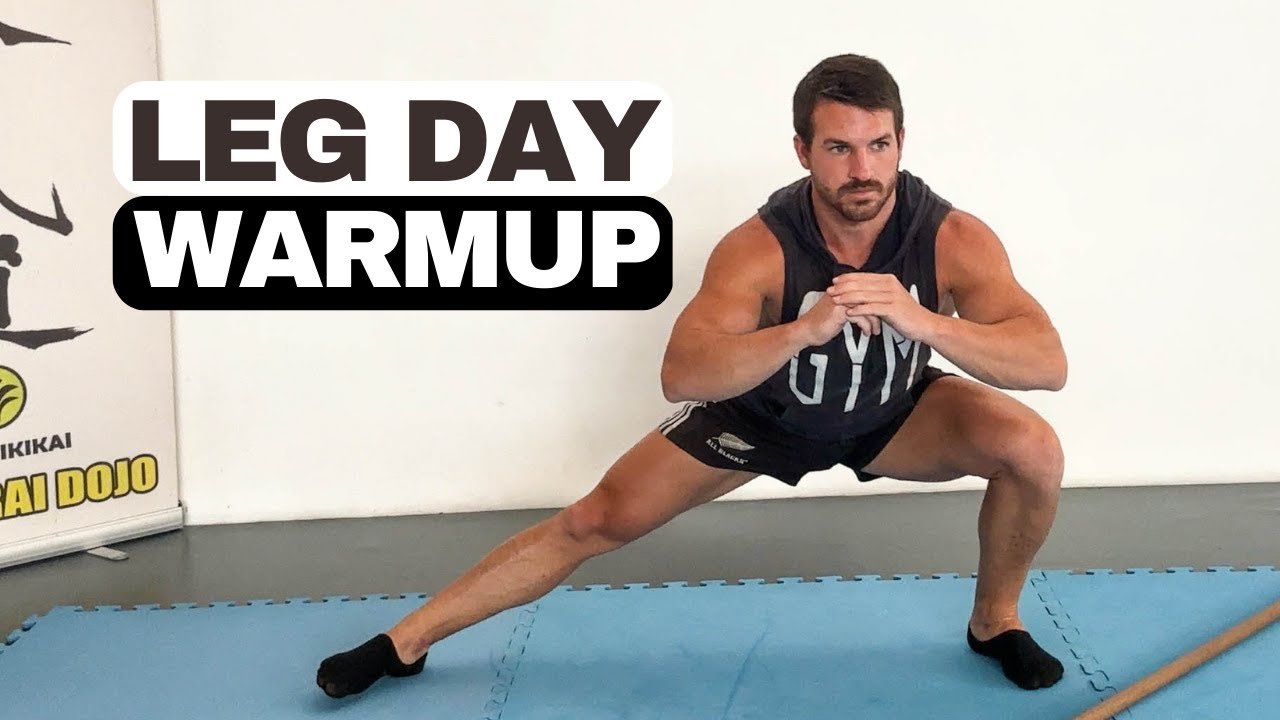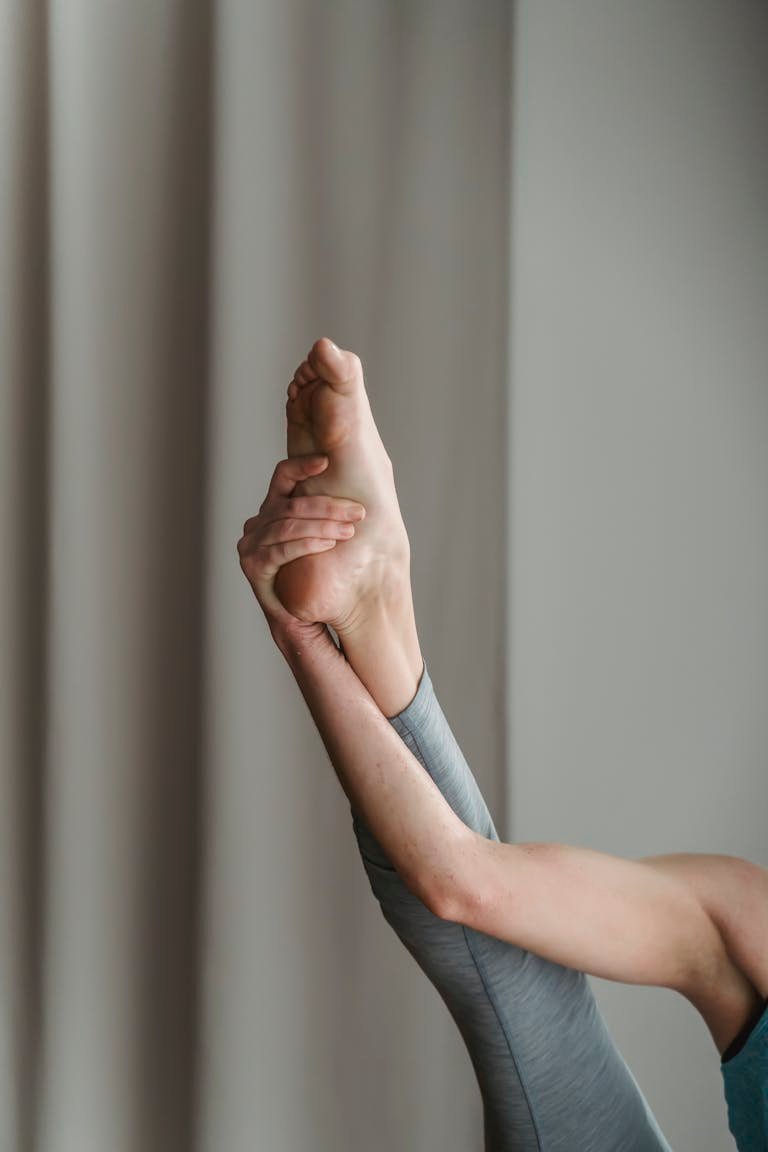Leg Stretches Before Workout: Why Skipping These Could Be the Biggest Mistake!
Leg Stretches Before Workouts are a pain in the butt. I personally hated stretching because it takes time when I just want to complete the workout and be done. But I realized just how important they are and never complained again.
Stretching provides your muscles the flexibility and blood flow they need for the upcoming workout. There are many scientific reasons why stretching is essential, and we’ll discuss them throughout the article.
Let’s get into the leg stretches that need to be done before your workouts.
Leg Stretches Before Workout
Incorporating dynamic leg stretches before a workout is crucial for warming up leg muscles, increasing blood flow, and reducing the risk of injury. Here are some high-quality and relevant dynamic leg stretches to consider before your workout:
Importance of Warming Up
Warming up is an essential part of any workout routine, especially on leg day. A proper warm-up prepares your muscles for the upcoming exercise, increases blood flow, and significantly reduces the risk of injury. By incorporating a well-rounded warm-up into your routine, you can enhance your physical performance by up to 79%. A good warm-up should include a combination of dynamic movements and static stretches to ensure your muscles are ready for the workout ahead. Dynamic movements, such as leg swings and lunges, get your blood flowing and muscles activated, while static stretches help to lengthen and relax the muscles, setting the stage for a successful workout.
Knee Grab Stretch

Leg Stretches Before Workouts- Knee Grab Stretch
Stand with feet hip-width apart. Raise one leg with the knee bent, grab it with both hands, and pull it up high while leaning forward. Alternate legs as you walk forward. Repeat for 30 seconds[1].
Hip Rotator
From standing, raise your right leg with the knee bent. Grab the knee with your right hand and the ankle with your left hand, pulling it toward your left shoulder. Alternate legs with each step, ensuring you engage the opposite leg for balanced stretching. Repeat for 30 seconds[1].
World’s Greatest Stretch
Lunge forward with your left leg forward, drop your right knee almost to the ground, and plant your right hand on the ground. Reach your left arm up toward the ceiling, turning your shoulders to the left. Alternate sides and continue for 30 seconds[1].
Inchworm
Bend forward from the hips and plant your hands on the ground. Walk your hands out to a high plank position, then walk them back toward your feet and stand up. Repeat for 30 seconds[1][2]. This stretch is particularly beneficial for those with tight hips, as it helps improve flexibility and range of motion.
Walking Toe Touch: Hamstring Stretch
Step forward with your right foot, plant the heel, and lift the toes to perform a hamstring stretch. Reach down with your left hand to touch your toes. Alternate sides and continue for 30 seconds[1].
Lateral Lunge

Leg Stretches Before Workouts- lateral lunge
Take a big step to the side, lean into that leg, and straighten the opposite leg’s knee. Alternate sides and perform at least five lunges each way[1]. This lateral lunge also serves as an effective quadricep stretch, helping to relieve soreness and increase flexibility in the quads.
Leg Swings
Stand on one leg and swing the other forward and back, gradually increasing the range of motion. Switch to side-to-side swings to stretch the abductors and adductors. Perform 10-15 swings per side[3][5]. Remember to keep your upper body engaged and maintain proper posture throughout the swings.
Runner’s Lunge
Start on hands and knees. Bring one foot forward next to the hand on the same side, straighten the back leg, and push the hips forward. Hold for one minute on each side, making it an effective static stretch to improve flexibility and range of motion[2].
These dynamic stretches prepare your legs for a workout by enhancing flexibility and range of motion, improving performance, and preventing injuries. They are particularly beneficial before engaging in activities that involve quick movements and require muscle responsiveness, such as running, weightlifting, or sports.
Dynamic Stretching
Dynamic stretching involves moving your joints through a full range of motion while keeping your muscles active. This type of stretching is crucial for warming up your muscles and preparing them for exercise. Unlike static stretches, which involve holding a position, dynamic stretches mimic the movements you’ll be performing during your workout, making them more effective for pre-exercise preparation. Examples of dynamic stretches include leg swings, lunges, and leg circles. These movements not only increase flexibility but also enhance muscle responsiveness, ensuring you’re ready for the physical demands of your workout.
The Science Behind Stretching Before Workouts
Increased Range of Motion
Dynamic stretching before exercise can increase your range of motion and flexibility in the short term[1][3]. That’s good for the workout.
Increased Blood Flow
Pre-workout stretching, especially dynamic stretching, can increase blood flow to your muscles[3][6]. That gets your body ready for physical activity by delivering more oxygen and nutrients to the working muscles.
Performance
Some studies show dynamic stretching before exercise can lead to improved performance, especially for activities that require power, speed and agility[6].
Reduced Risk of Injury: Injury Prevention
While debated, some research suggests proper pre-workout stretching can reduce the risk of some injuries[1][3]. But that’s not proven.
Types of Stretching: Dynamic Stretching
The type of stretching matters. Dynamic stretching (moving stretches) is recommended before exercise, while static stretch (holding a stretch) is recommended after exercise[4][6].
Muscle Physiology
Stretching affects muscle fibers and surrounding connective tissue. It can change the length-tension relationship in muscles which can impact performance[2].
Neuromuscular Effects
Stretching can affect the neuromuscular system and improve coordination and muscle activation patterns[4].
Stretch Reflex
You need to understand the stretch reflex. Rapid stretching can trigger this reflex and cause muscle contraction. Slow, controlled stretching can override this reflex[4].
Stretching Best Practices
Stretching is a vital component of any workout routine, and doing it correctly is key to reaping the benefits. Here are some best practices to keep in mind:
Always warm up before stretching: Start with light cardio or dynamic stretching to increase blood flow and reduce the risk of injury.
Focus on major muscle groups: Target essential muscle groups such as your hamstrings, quadriceps, and hip flexors. Properly stretching these areas is crucial for leg day.
Hold stretches for 15-30 seconds: Allow your muscles to relax and lengthen by holding each stretch for 15-30 seconds. Avoid bouncing or forcing your way into a stretch, as this can cause injury.
Don’t stretch to the point of pain: Stretch to the point of mild discomfort, but never to the point of pain. Overstretching can lead to injury and diminish the effectiveness of your workout.
Safe and Effective Stretching
Ensuring your stretching routine is safe and effective is essential for preventing injury and maximizing benefits. Here are some tips:
Listen to your body: If you experience pain or discomfort while stretching, stop immediately and adjust the stretch to make it more comfortable.
Use proper technique: Maintain proper form by keeping your back straight, engaging your core, and avoiding bouncing or forcing your way into a stretch.
Stretch after your workout: Post-workout stretching can improve flexibility and reduce muscle soreness. Focus on static stretches that target major muscle groups to aid in recovery.
Common Mistakes to Avoid
When it comes to stretching, avoiding common mistakes can make a significant difference in your workout effectiveness and injury prevention. Here are some pitfalls to watch out for:
Not warming up before stretching: Always start with a warm-up to increase blood flow and reduce the risk of injury.
Stretching too aggressively: Avoid stretching to the point of pain or discomfort. This can cause injury and reduce the effectiveness of your workout.
Not holding stretches long enough: Hold each stretch for 15-30 seconds to allow your muscles to relax and lengthen.
Neglecting major muscle groups: Ensure you stretch major muscle groups such as your hamstrings, quadriceps, and hip flexors to prevent injury and improve flexibility.
By following these guidelines, you can ensure your stretching routine is both safe and effective, setting the stage for a successful workout.
Potential Drawbacks
Reduced Power
Some studies show static stretching right before high intensity activities can temporarily reduce muscle strength and power[2][7].
Injury Risk
Overstretching or poor stretching technique, especially with cold muscles, can be an injury[5][7].
Tips
Focus on dynamic stretching before exercise to get muscles ready[3][6].
Keep pre-workout stretches short, 5-10 seconds per stretch[4].
Do a light warm-up before stretching to get muscles warm[5].
Customize your stretching routine to your workout and individual needs[6].
In summary, pre-workout stretching can be beneficial but do it right. Dynamic stretching before exercise, static stretching after or as part of a separate flexibility routine.
References:
[1] https://www.livestrong.com/article/359631-dynamic-leg-stretches/
[2] https://www.bustle.com/wellness/leg-stretches-before-workout
[3] https://www.hosmerchiropractic.com/7-ultimate-dynamic-stretching-exercises/
[4] https://www.healthline.com/health/exercise-fitness/leg-stretches-flexibility
[5] https://athletemovement.com/pre-workout-stretches-legs/
[6] https://www.youtube.com/watch?v=Dhx8TwvkLow
[7] https://www.kansashealthsystem.com/news-room/blog/0001/01/dynamic-stretching-exercises
[8] https://www.mensjournal.com/health-fitness/leg-stretches
More References
[1] https://www.resultspt.com/blog/posts/the-importance-of-pre-workout-stretches
[2] https://www.ncbi.nlm.nih.gov/pmc/articles/PMC1071358/
[3] https://calirehab.com/5-benefits-to-stretching-before-and-after-you-exercise/
[4] https://nptiflorida.edu/the-science-of-stretching/
[5] https://www.health.harvard.edu/staying-healthy/ask-the-doctor-stretching-before-exercise
[6] https://physicaltherapyzone.com/6-benefits-of-stretching-before-and-after-your-workout/
[7] https://www.stretchzone.com/press/stretching-before-a-workout-experts-warn-it-could-lead-to-injury
[8] https://www.vogue.com/article/should-you-stretch-before-or-after-exercise







